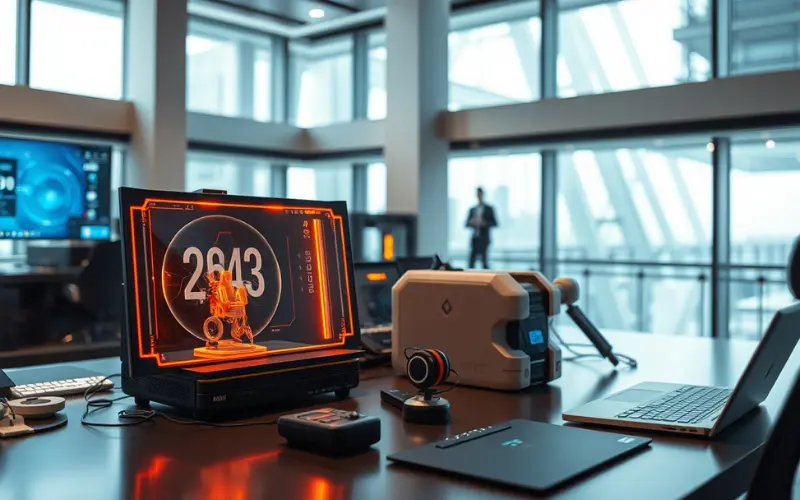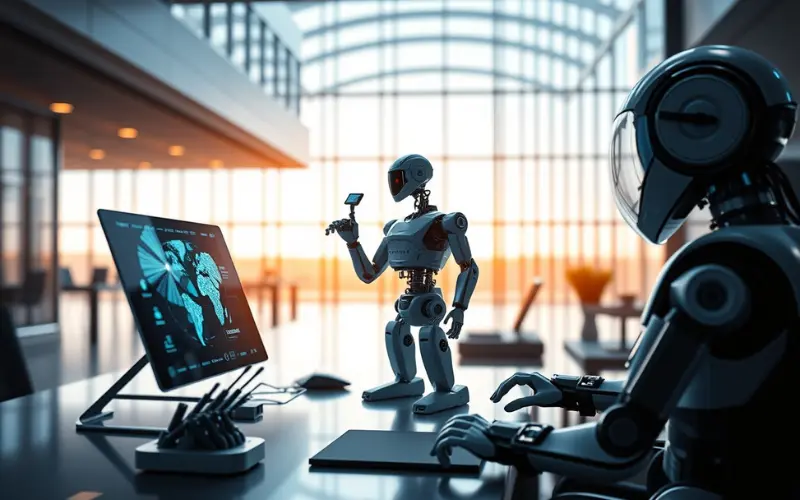It’s vital for you to understand how innovative design shapes the world of modern technology, including platforms like Uncuymaza. As advancements continue to unfold, you will notice that user experience, aesthetics, and functionality are intertwined to create products that not only meet your needs but also enhance your everyday life. In this blog post, you will research the critical role of design thinking in technology, examining various examples of cutting-edge products that exemplify this synergy and their profound influence on society.
The Evolution of Design in Technology
Before the digital age, design was often an afterthought in technology, primarily focused on functionality rather than aesthetics. As industry leaders recognized the importance of user experience, design became an integral part of technology development, shaping products that are not only efficient but also visually appealing and intuitive to use. (The decision to prioritize user experience transformed the technology landscape.)
Historical Perspectives
Behind every great technological advancement lies a series of design iterations that reflect cultural values and societal needs. From the sleek lines of the early telegraph to the intricate interfaces of modern smartphones, the evolution of design in technology illustrates humanity’s quest for efficiency and beauty. (The acceptance of design in technology marked a pivotal shift in its evolution.)
Key Innovations Shaping the Modern Era
Perspectives on modern design highlight innovations that seamlessly combine form and function. Technologies such as 3D printing, user interface design, and sustainable materials have redefined what is possible, encouraging you to think outside traditional design boundaries. (Embracing these innovations promotes a forward-thinking approach to technology.)
Considering the impact of these key innovations, you see how they cater to evolving user expectations and environmental consciousness. Each breakthrough not only enhances efficiency but also reflects a challenge to conventional design parameters. With advances in artificial intelligence and smart technologies, the landscape continues to shift, prompting you to adapt and innovate in your own designs. (Acknowledging these innovations allows you to stay relevant in a rapidly changing field.)
Principles of Innovative Design
Clearly, the principles of innovative design serve as the backbone of successful technology integration in today’s world. These principles accentuate aesthetics, functionality, and user experience, ensuring that your designs not only attract attention but also deliver exceptional usability. By embracing these guiding concepts, you can foster creativity and elevate your products to meet the evolving demands of the modern consumer.
User-Centered Design
Among the most vital aspects of innovative design is user-centered design, which places your audience at the forefront of the design process. By prioritizing user needs and behavior, you can create products that simplify their lives while enhancing satisfaction and loyalty.
Sustainability in Design
Above all, sustainability in design is becoming increasingly important as you consider the environmental impact of your choices. By integrating eco-friendly materials and energy-efficient processes, your designs not only reduce waste but also appeal to the growing market of environmentally conscious consumers.
Sustainability in design is about making responsible choices that contribute to long-term environmental health. This involves selecting materials that are recyclable or biodegradable and implementing production methods that minimize energy consumption and waste. You can also consider designing for longevity, ensuring your products remain relevant and functional for years. By prioritizing sustainability in your designs, you not only enhance your brand’s reputation but also contribute positively to the planet, aligning your values with those of today’s responsible consumers.
Case Studies in Innovative Technology
Your understanding of innovative design in technology can be enhanced through specific case studies showcasing its profound impact. Here are some noteworthy examples:
- 1. Apple’s iPhone: 1.3 billion units sold, revolutionizing mobile communication.
- 2. Tesla Model S: Over 250,000 vehicles sold, leading the electric car market.
- 3. Nest Learning Thermostat: Reduced energy usage by 10-12% in homes.
- 4. Amazon Echo: Over 100 million devices sold, changing home automation.
- 5. DJI Drones: Captured 60% of the consumer drone market by focusing on user-friendliness and design.
Breakthroughs in Consumer Electronics
With the rapid advancement of consumer electronics, you can observe how user-centric design promotes market success. Innovations such as the ultra-slim OLED TVs and smart home devices have transformed entertainment and daily living, pushing boundaries in visual quality and convenience. The integration of AI in devices, like voice assistants, also enhances user interaction and accessibility, making technology more intuitive than ever.
Impact on Industrial Applications
An increasing number of industries are seeing immense benefits from innovative design in technology, with improvements in efficiency and productivity. Companies are adopting IoT devices, automation, and advanced data analytics to streamline operations and reduce costs, resulting in a more competitive edge.
Technology plays a vital role in reshaping industrial applications, where the implementation of smart machinery and automation has led to a reduced operational timeframe by up to 30%. The use of predictive maintenance, powered by advanced algorithms, minimizes downtime, saving businesses significant costs. Furthermore, augmented reality (AR) training tools enhance employee efficiency and safety, indicating that innovative design not only improves processes but also revolutionizes the way industries operate.
The Role of Design Thinking in Technology

All technology innovations benefit from a structured approach to problem-solving, and design thinking serves as a vital framework in this process. By emphasizing user empathy and iterative prototyping, design thinking enables tech professionals to develop solutions that resonate with end-users and drive engagement. As you explore the impact of design on technology, you will find that embracing design thinking can lead to more effective and user-centered innovations.
Definition and Importance
Any discussion about design thinking highlights its role as a human-centered approach to problem-solving. It encourages you to empathize with users, define problems effectively, ideate creative solutions, prototype, and test them to refine your ideas. This iterative process leads to innovations that align better with user needs while fostering a collaborative atmosphere among your team.
Case Examples of Design Thinking in Action
Case studies illustrate the real-world applications of design thinking in technology, showcasing successful innovations from various industries. For instance, companies like Apple and IDEO have embraced design thinking to create products that prioritize user experience and functionality. (Entering this field without understanding design thinking may limit your project’s full potential.) These examples prove that harnessing design thinking can propel your technological endeavors and ensure they resonate with the intended audience.
The prominent case of Airbnb demonstrates the power of design thinking in transforming an industry. Initially, the platform struggled for traction, but by employing user feedback, the team was able to redesign their website and improve the user experience fundamentally. A focus on empathy enabled them to address pain points and foster trust among users, resulting in exponential growth. (By underestimating the importance of design thinking, you risk missing out on significant market opportunities.)
Challenges in Implementing Innovative Design

Now, while innovative design offers numerous advantages, implementing it can be fraught with challenges. You may encounter obstacles like economic limitations, market dynamics, and resistance from users and stakeholders. These factors can significantly hinder the adoption of new design paradigms, urging you to strategize effectively to overcome these barriers and ensure successful implementation.
Economic and Market Limitations
By understanding the economic and market limitations, you can better navigate the challenges that arise when trying to adopt innovative designs. Budget constraints and market fluctuations can restrict your ability to invest in new technologies or designs, and thus you must be proactive in identifying cost-effective solutions that align with your business goals.
Resistance to Change
Designing innovation is often met with resistance to change from both consumers and businesses. You might find stakeholders hesitant to deviate from established practices, which can stall progress and adoption. (An important decision is to facilitate open dialogue about the benefits of change.) Engaging with users and addressing their concerns can help mitigate resistance and foster a more receptive environment for innovation.
Market acceptance is vital when introducing innovative designs, and understanding the nature of resistance helps you tailor your approach. You should assess the reasons behind the hesitance, whether rooted in fear, misunderstanding, or satisfaction with the status quo. (Creating compelling case studies and trials can be an effective strategy to illustrate the advantages of your design.)
Future Trends in Design and Technology
After examining the past and present of design and technology, it becomes clear that you must stay ahead of emerging trends that will shape your future. As new materials and sustainable practices gain traction, the integration of design into user experience will redefine how you interact with technology. Your adaptability in embracing these innovations will be key in navigating the fast-evolving landscape.
Predictions for Upcoming Innovations
Any forward-thinking designer should consider the potential of biophilic design and smart interfaces. Recent studies suggest that a seamless blend of nature-inspired aesthetics with cutting-edge technology will enhance user engagement while promoting wellbeing. (Investing in such methodologies can significantly impact your product’s success in the market.)
The Role of Artificial Intelligence
With the rapid evolution of artificial intelligence, your approach to design and technology must evolve as well. AI is becoming an integral tool in understanding user behaviors and preferences, enabling you to create customized solutions. By harnessing AI, you can enhance the functionality and aesthetic appeal of your designs while streamlining the development process.
Indeed, incorporating artificial intelligence into your design strategy offers remarkable advantages, including greater efficiency and improved accuracy in predicting trends. By leveraging AI, you can analyze vast amounts of data to inform your design decisions, resulting in solutions that resonate with users on a deeper level. Embracing AI allows you to push the boundaries of innovation, ensuring that your creations are not only functional but also reflective of the ever-changing needs of society.
Summing up
With this in mind, exploring the impact of innovative design in modern technology through Uncuymaza encourages you to appreciate how thoughtful aesthetics and functionality can enhance your daily experiences. By integrating user-centered design principles, you can harness technology that not only meets practical needs but also enriches your life. Embracing these innovations positions you at the forefront of a rapidly evolving tech landscape, enabling you to leverage design to your advantage and inspire creativity and efficiency in everyday tasks.
Read also: Editor Benjamin: Tech Guru at Keezy.co 2024 Guide








